I’m so excited to share ways to keep your garden and lawn looking polished with beautiful edging ideas. There’s something so satisfying about a clean, defined border that separates your flower beds from your lawn—it instantly makes your outdoor space look tidy, intentional, and well cared for.
Lawn edging is more than just a practical solution. It adds structure, highlights your plantings, and can even become a decorative feature of your garden. Whether you prefer classic stone, modern metal, or playful creative designs, the right edging brings a sense of order and style to your yard that’s both functional and visually appealing.
If you’re ready to get inspired and also want some tools and supplies to make your edging projects easier, I’ve gathered a few Amazon products that are perfect for keeping your garden beds neat and stylish.





Imagine stepping into your garden and seeing perfectly defined flower beds bordered with charming stones, sleek metal, or creative DIY accents. The edges create a visual rhythm that draws the eye to your favorite plants and makes maintenance easier. Every border feels intentional, enhancing the beauty of your blooms while keeping grass and weeds at bay.

With that vision in mind, let’s explore 31 lawn edging ideas that will help you maintain a tidy, inviting garden while adding style and personality.
#1 Garden Lawn Edging With Brick




Material: Bricks
Brick edging offers a classic and durable way to define your lawn borders. Bricks can be laid out in various patterns like herringbone, basket weave, or a simple straight line. They are sturdy, weather-resistant, and can be set with or without mortar for different looks.
#2 Old Clay Pots for Garden Lawn Edging
Material: Old clay pots
Repurpose old clay pots to create a rustic garden edge. Arrange the pots in a continuous line, either upright or partially buried horizontally. This not only defines the garden border but also adds a touch of whimsy and character to the space.
#3 Unused Glass Bottles for Garden Lawn Edging

Material: Glass bottles
Using glass bottles for lawn edging adds color and charm. Bury the bottles neck-down in the soil, either in a uniform color scheme or a mix of colors. The bottles reflect light beautifully and can be a conversation starter in your garden.
#4 Flowers For A Lawn Garden Edging

Material: Flower plants (e.g., lavender, marigolds, petunias)
Planting flowers along the edge of your lawn not only creates a colorful border but also attracts pollinators. Choose perennials for long-lasting blooms and low maintenance. Arrange them in a single row or a staggered pattern for a lush, full look.
#5 Rock Garden Lawn Edging

Material: Rocks and stones
Rocks and stones provide a natural, durable lawn edge. Use a mix of different sizes and shapes to create a rugged, organic border. Larger rocks can serve as focal points, while smaller stones fill in gaps for a cohesive look.
#6 Wood Log Garden Edging




Material: Wood logs
Wood logs offer a rustic, earthy appeal. Cut logs into uniform lengths and bury them vertically to create a sturdy border. For a more polished look, sand and seal the logs, or leave them natural for a raw, woodland feel.
#7 River Rock Planter Edging




Material: River rocks and planters
Combine river rocks with planters to create a functional and attractive garden edge. Arrange river rocks around the base of planters to define the lawn while aiding in drainage. This method adds texture and visual interest to your garden.
#8 Wood Raised Garden Bed

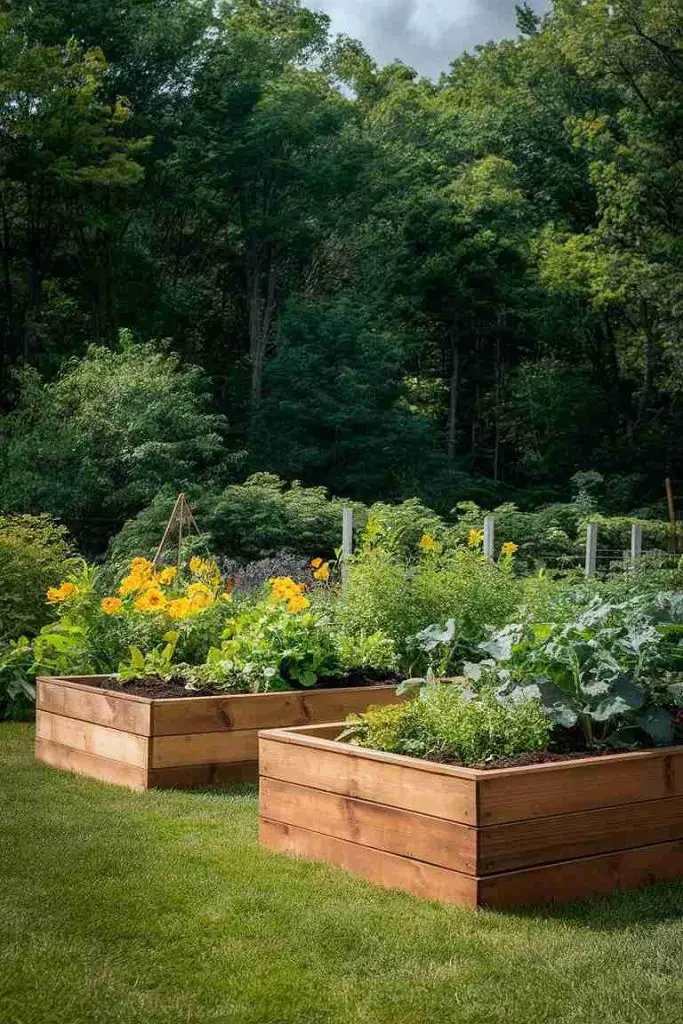

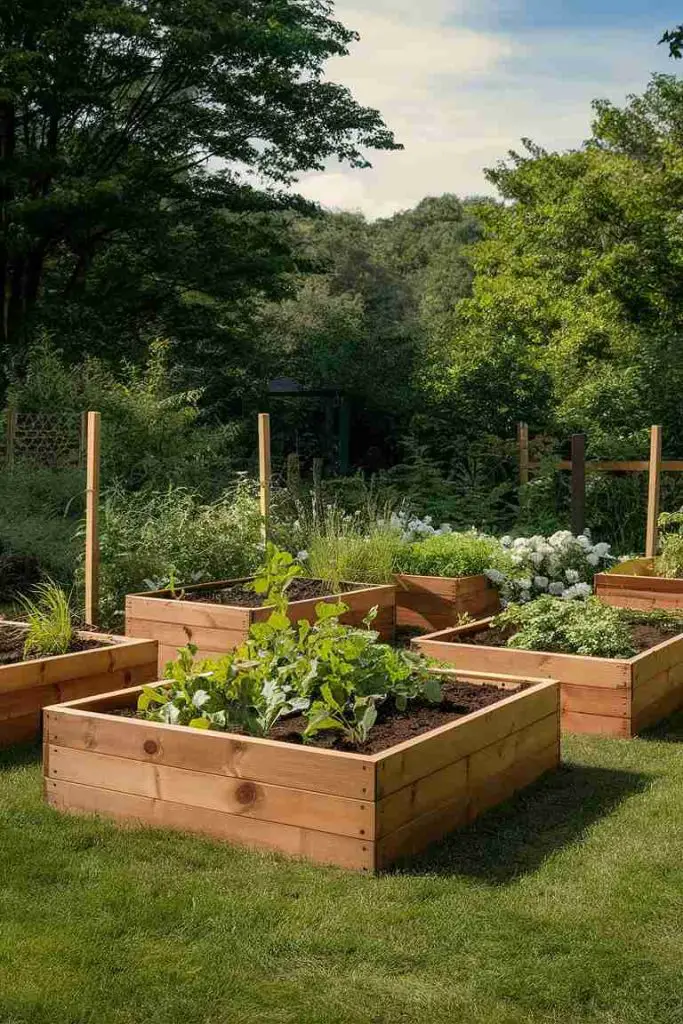
Material: Wood (untreated or treated)
Wood raised garden beds are perfect for defining garden edges while also providing additional planting space. Construct beds of various shapes and sizes to fit your garden layout. These beds are ideal for growing vegetables, herbs, or flowers.
#9 Concrete Garden Lawn Edging




Material: Concrete
Concrete edging provides a clean, modern look. Use concrete molds to create custom shapes and patterns, or opt for pre-made concrete edging stones. Concrete is highly durable, weather-resistant, and requires minimal maintenance.
#10 Metal Garden Edging
Material: Metal (steel or aluminum)
Metal edging offers a sleek, contemporary border. Steel or aluminum strips can be bent to create straight or curved edges, giving your garden a crisp, defined look. Metal edging is long-lasting and can withstand harsh weather conditions.
#11 Long Wood Garden Edging



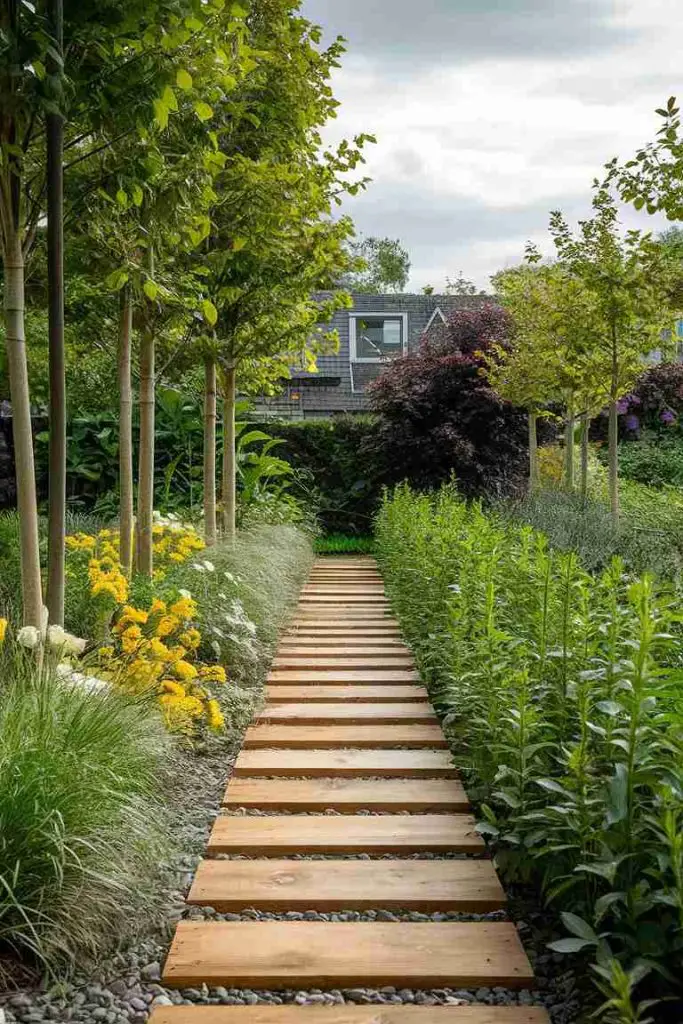
Material: Long wooden planks
Long wooden planks create simple and effective garden edges. Lay the planks horizontally to form a continuous and sturdy border. You can paint or stain the wood to match your garden’s aesthetic or leave it natural for a rustic look.
#12 DIY Ball Garden Edging




Material: Decorative balls (ceramic, concrete, or metal)
Decorative balls add a playful and artistic touch to your lawn. Place ceramic, concrete, or metal balls at intervals along the garden edge to create unique and eye-catching borders. This method allows for great creativity and personalization.
#13 Seashell Garden Edging




Material: Large seashells
Seashells offer a coastal and whimsical feel to garden edging. Arrange large seashells along the garden border, partially burying them for stability. This method is perfect for beach-themed gardens or adding a seaside touch to your outdoor space.
#14 Branch Garden Edging
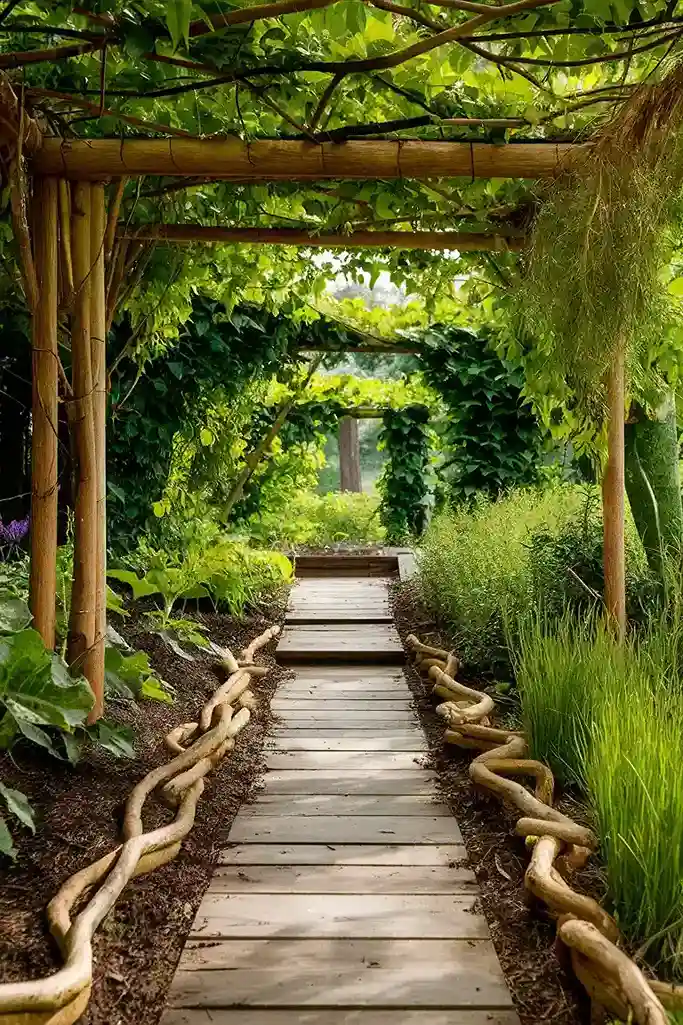



Material: Branches
Branches provide an eco-friendly and natural garden edging option. Weave flexible branches into a low fence or arrange them in a continuous line. This method is cost-effective and blends beautifully with the surrounding greenery.
#15 Using Mulch as Edging




Material: Mulch (wood chips, bark, or straw)
Mulch helps retain soil moisture, suppress weeds, and define garden edges. Create a thick layer of mulch around the lawn’s perimeter to enhance the garden’s health and appearance. Mulch is available in various colors and types for customization.
#16 Recycled Water Hoses


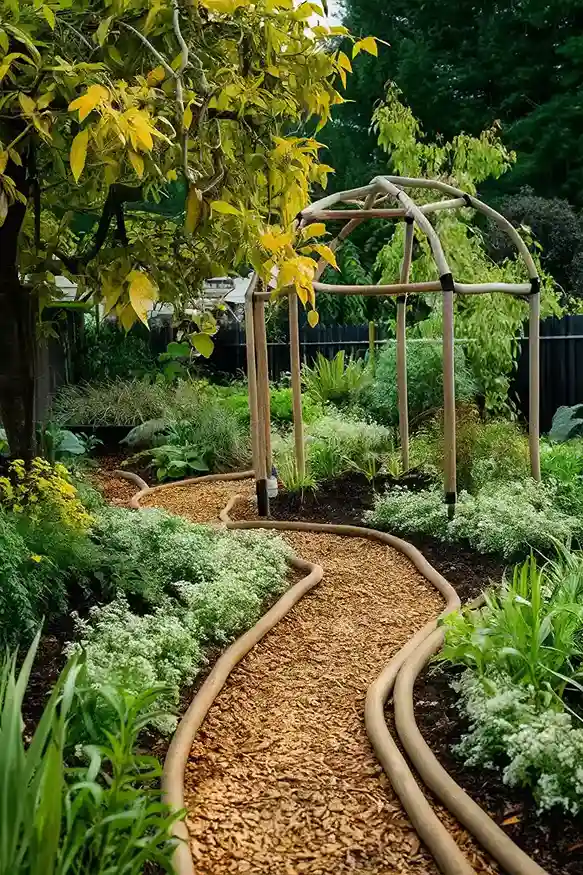

Material: Old water hoses
Repurpose old water hoses for garden edging to create a flexible and durable border. Lay the hoses in gentle curves or straight lines, securing them with garden stakes. This method is an excellent way to recycle materials and add a unique touch to the garden.
#17 Plates




Material: Old or mismatched plates
Using plates for garden edging adds a quirky and colorful touch. Partially bury old or mismatched plates along the garden border to create a distinctive edge. This method repurposes unused items and adds a fun element to the garden.
#18 Grass



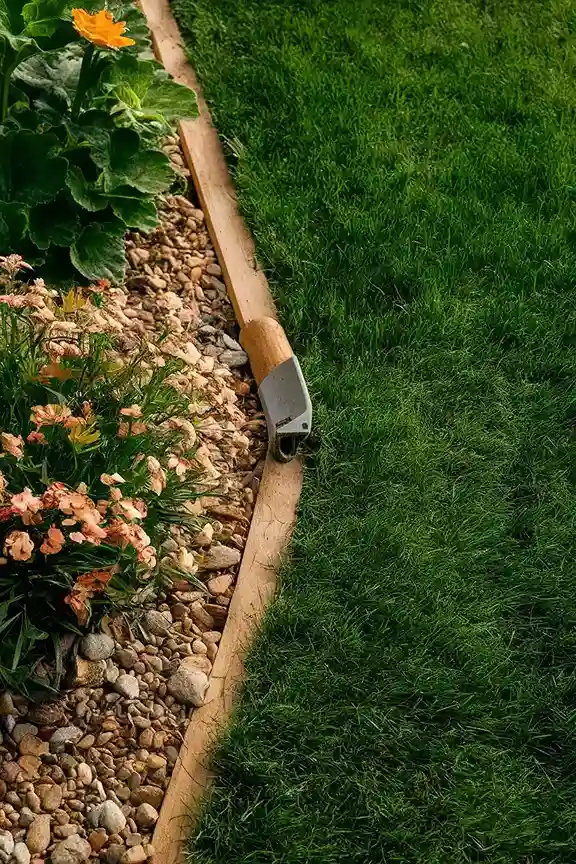
Material: Grass and edging tool
Trimmed grass provides a simple and natural lawn edge. Use a sharp spade or edging tool to define the boundary and keep the grass in check. This method maintains a seamless look and integrates well with the lawn.
#19 A Natural Garden Edging




Material: Plants, stones, or mulch
Natural garden edging involves using elements like plants, stones, or mulch to create a seamless transition between the lawn and garden. It offers an organic appearance and ease of maintenance, blending harmoniously with the landscape.
#20 Recycling The Roof
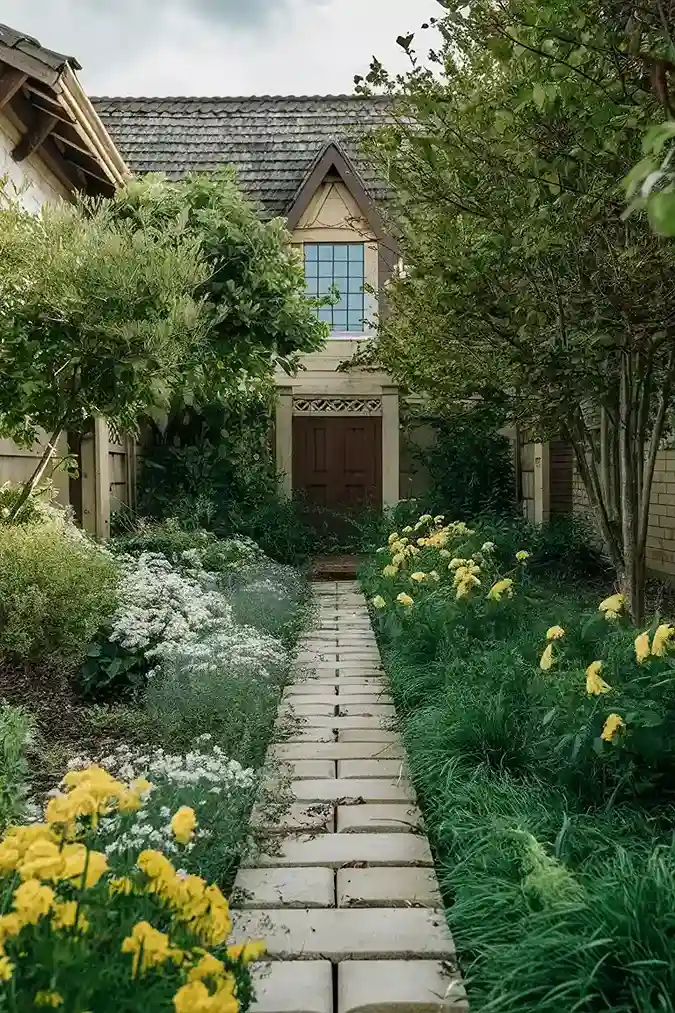



Material: Old roof tiles or shingles
Use old roof tiles or shingles as garden edging. Arrange the tiles in a continuous line or overlap them slightly to create a sturdy and attractive border. This method gives a second life to discarded materials and adds a unique look to the garden.
#21 Gravel Garden Edging




Material: Gravel
Gravel offers a clean and low-maintenance garden edging option. Use gravel of different colors and sizes to create an appealing border that also aids in drainage. Gravel edges are easy to install and adjust, making them a practical choice for any garden design.
#22 Swooping Elegance with Natural Stone




Material: Natural stone
Create elegant, sweeping curves with natural stone for a sophisticated garden edge. This method highlights the natural beauty of the stone while providing a durable and eye-catching border.
#23 Hanging Charm and Wooden Warmth


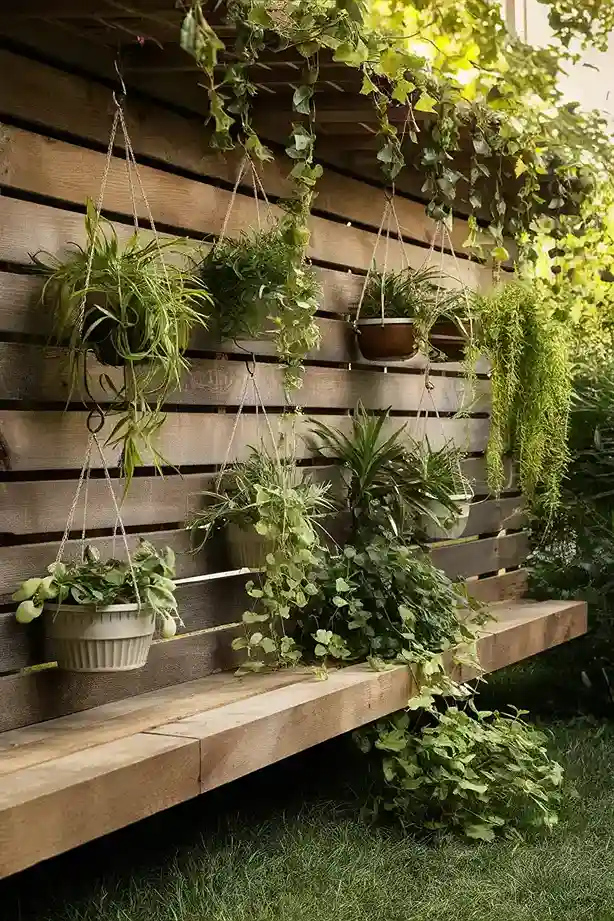


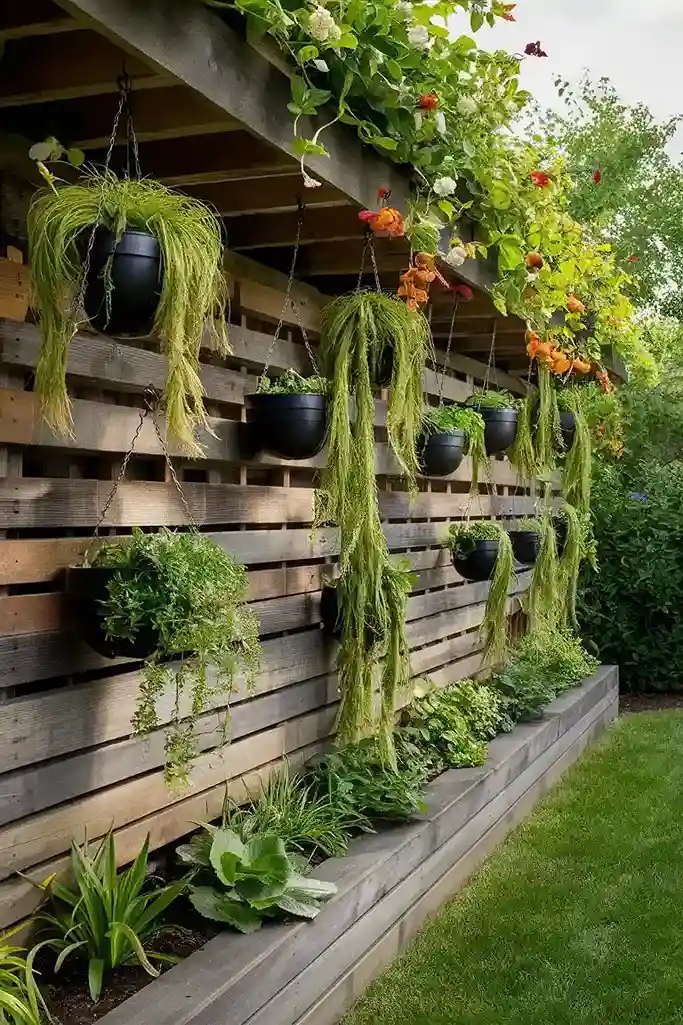


Material: Wooden planks and hanging plants
Combine wooden planks with hanging plants to create a charming and warm garden edge. The wood adds a rustic feel, while the hanging plants introduce a vertical element to the design.
#24 The Geometric Dance of Wood and Stone




Material: Wood planks and stones
Use a combination of wood planks and stones to create geometric patterns along your garden edge. This method offers a modern and dynamic look, perfect for contemporary garden designs.
#25 The Curvaceous Pathway of Blooms and Stones




Material: Flower plants and stones
Create a curving pathway edged with blooming flowers and stones. This method provides a colorful and inviting border that guides visitors through your garden.
#26 The Zen of Simplicity: Wood, Rock, and Greenery




Material: Wood, rocks, and greenery
Embrace simplicity with a zen-inspired garden edge using wood, rocks, and greenery. This combination promotes tranquility and balance in your garden design.
#27 The Timeless Circle: Bricks, Grass, and Solar Lights




Material: Bricks, grass, solar lights
Combine bricks with neatly trimmed grass and solar lights to create a timeless circular garden edge. This method is both practical and visually appealing, offering nighttime illumination.
#28 The Playful Geometry of Timber



Material: Timber planks
Use timber planks to create playful geometric patterns along your garden edge. This approach adds a touch of creativity and uniqueness to your outdoor space.
#29 The Art of Repetition: Log Rounds as Garden Accents
Material: Log rounds
Incorporate log rounds as repeating garden accents along your lawn edge. This method adds texture and interest, creating a cohesive and natural look.
#30 A Touch of the Tropics




Material: Tropical plants and decorative stones
Introduce a tropical vibe with lush tropical plants and decorative stones along your garden edge. This method enhances the exotic feel of your garden space.
#31 The Classic Brick Road

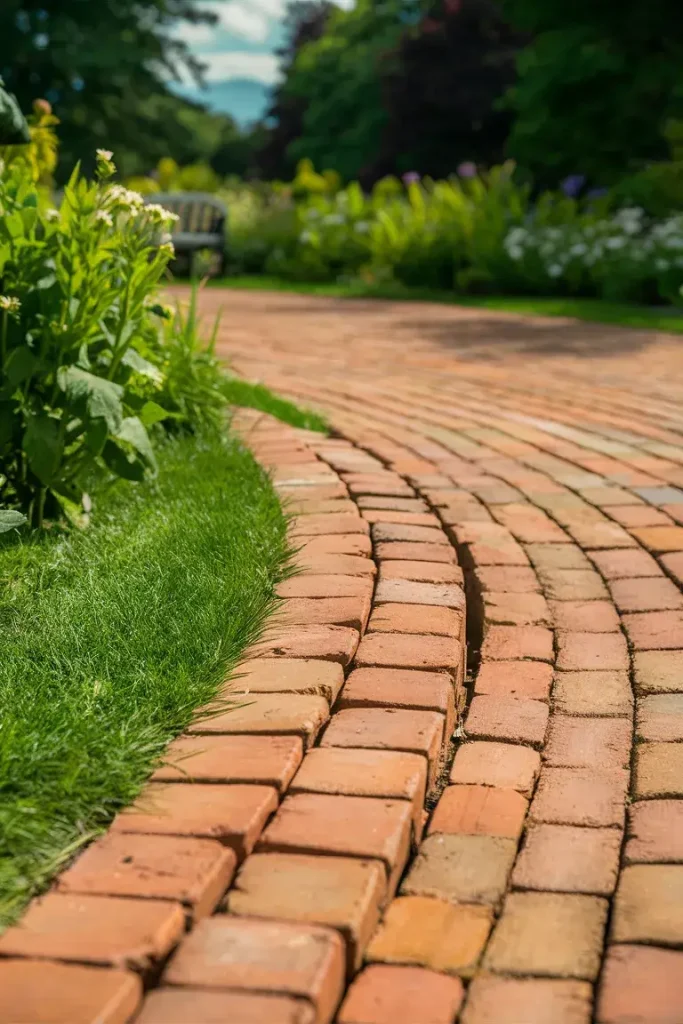


Material: Bricks
Lay bricks in a traditional road pattern to create a classic garden edge. This method is timeless and offers a clean, structured look.
These garden lawn edging ideas can enhance your garden’s appearance and functionality, providing options to suit every style and budget.





